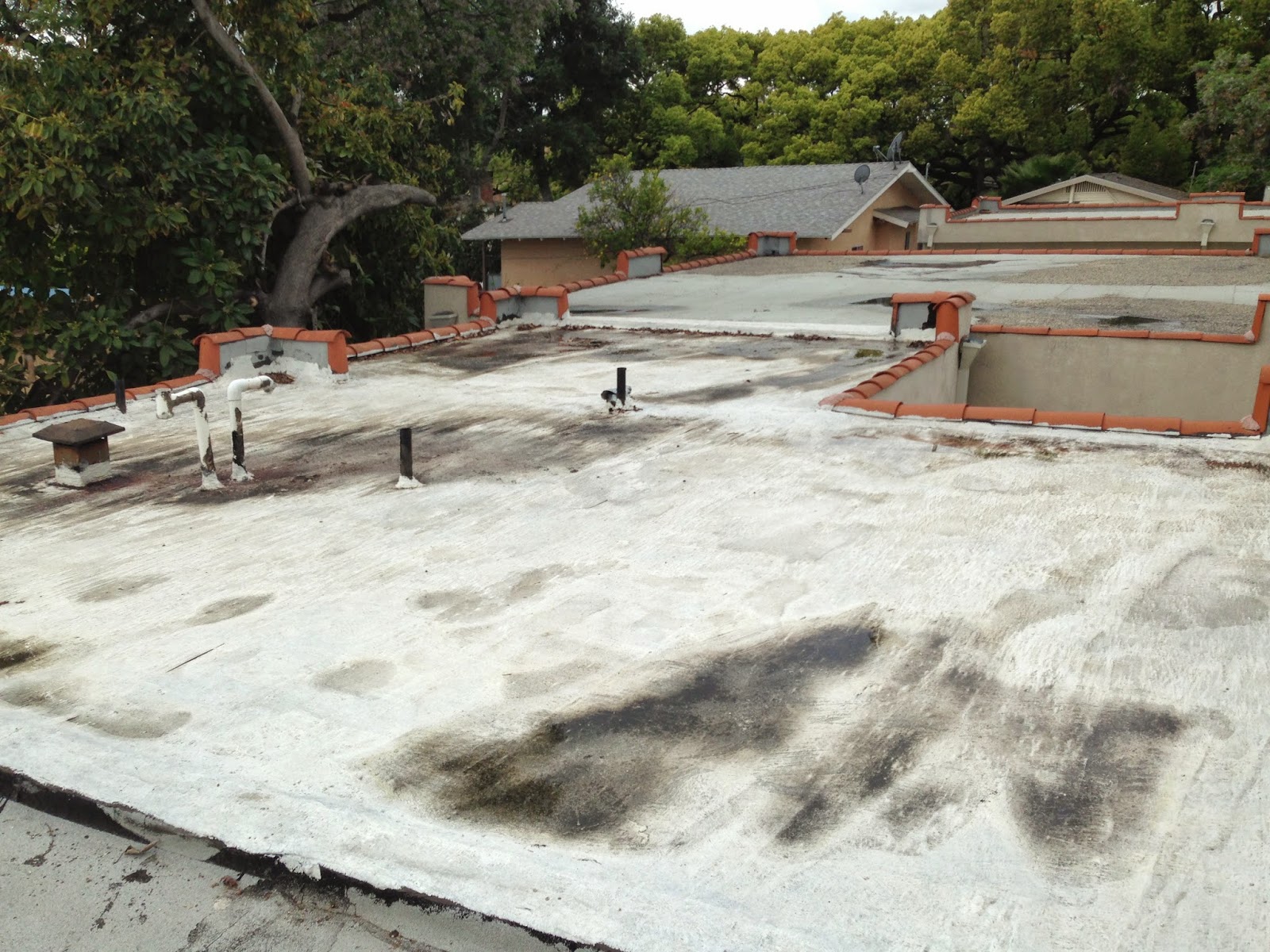 |
Here is a 3 year old Asphalt Emulsion / Acrylic system.
It is failing and leaking. Oil and water simply do not mix!
|
The most common type of Roof Restoration we see in Southern California is the Asphalt Emulsion/Polyester/Acrylic System. This system starts with a layer of Asphalt Emulsion. Emulsion is a mixture of water, oil, and bentonite clay.
The Asphalt Emulsion is sprayed or rolled onto the roof and while still wet, a layer of polyester is then embedded into the Asphalt Emulsion. Multiple layers can be applied as needed. The most common application is one layer. The Emulsion is then left to cure for 7-10 days. The roof is then power washed. Followed by 2 coats of Acrylic Surfacing. The minimum thickness of the final layer of Acrylic is required to be 20 Dry Mils to meet California's Title XXIV code.
 |
| WATER BASED ACRYLIC SHRINKS AND PEELS |
 |
| ACRYLIC IS PAINT. |
These roof systems SOUND good and often they are priced very low. Bu howt do they perform? Unfortunately, all too often the answer is not very well! The reason is simple - Asphalt Emulsion is Oil. Acrylic is generally speaking, a water-based paint.
Ask any professional Painter if they would apply Water Based Paints over Oil based paints? They'll tell you - Of course not! It will not stick! It will peel......
Roofing systems are no different. Asphalt Emulsion is OIL. When waterbased Acrylic is applied over oil, peeling is almost always the result.
Bottom line- these systems do not hold up well on most roofs. They are especially suscceptible to damage at waterways, valleys, and drain areas. They are only recommended when the roof system has excellent drainage.



